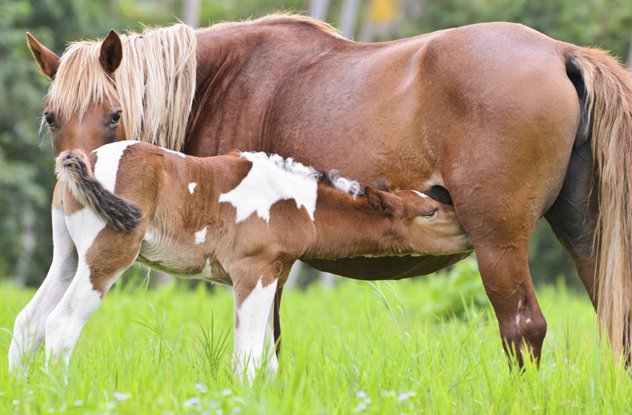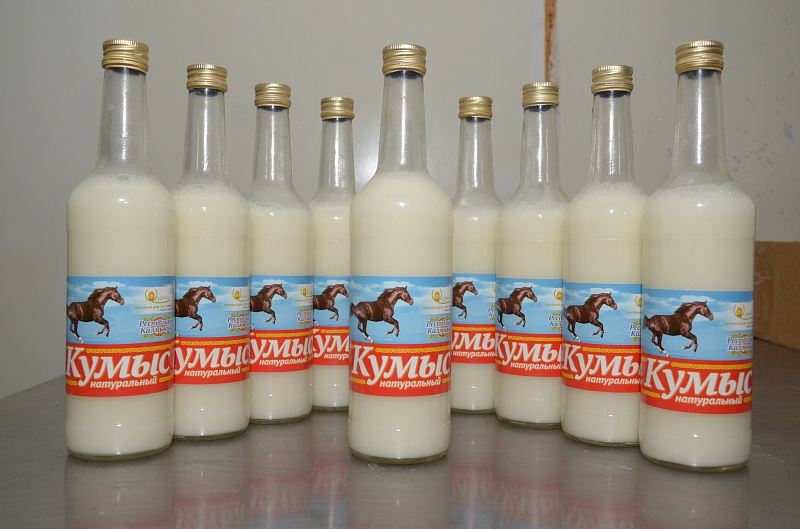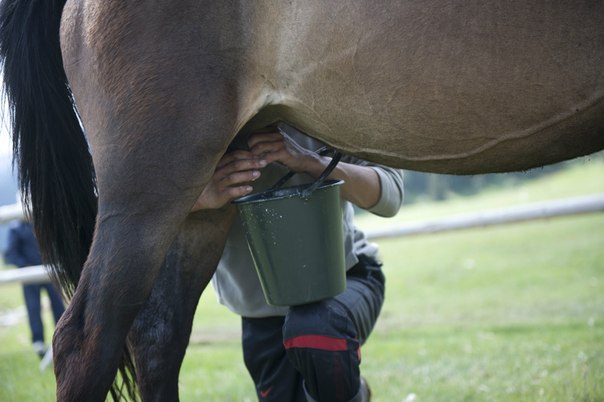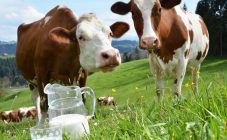Content:
Few people know that horses are not only excellent racers and competitors. Horse milk is in great demand among those who know its true value. It is used not only in cooking, but also in cosmetology.
Features of lactation of mares
It is impossible to single out the exact amount of milk that a mare can give for lactation, since milk yield depends on many factors, including the breed of the female.
The average healthy mare is capable of producing about 12 liters in the first months of lactation. High dairy - over 22 liters. On average, over the entire lactation period, a horse can produce more than 2000 liters of milk. But this is not the maximum.
Milking a horse is not easy. You need to start immediately after giving birth, when the cub begins to suck milk. During feeding, while the newborn is busy with one teat, the second is milked. Gradually the foal is driven off and two teats are milked at once.
general characteristics
Mare's milk differs significantly in its composition from the milk of other domestic animals. It includes:
- 2% protein;
- 1-3% fat;
- 6.5% lactose;
- up to 1% ash elements;
- vitamins A, C, B1, B2, B6, B12, E;
- enzymes;
- amino acids;
- calcium;
- phosphorus;
- cobalt;
- copper;
- iron;
- sodium;
- iodine;
- zinc;
- manganese;
- silicon;
- aluminum;
- titanium.
The benefits of horse milk
The main advantage of this product is that it is very easily absorbed by the body. It is used in medicine: for the treatment of tuberculosis and metabolic disorders; with stomach, intestinal, skin diseases; to improve immunity and to cope with diarrhea in infants.
Mare's milk has no specific name. But if you are interested in the name of a fermented milk drink made from horses' milk, this is kumis. It contains a large amount of digestible nutrients, 95%, and is used to prevent tuberculosis. In addition, milk is the main ingredient in baby foods.
How a horse is milked
Many people are interested in the questions: does a horse have an udder, how many nipples does a horse have, and how are mares milked? The mare has an udder, like other farm animals, but its structure is somewhat different. For milking, there are two udders with a capacity not exceeding 1.5 liters. They have two nipples.
The milking period for horses begins at the age of four and ends when they are about 16. For most mares, the presence of a foal is required, without which lactation ceases.
Due to the small size of the udder, hand milking is carried out several times a day. First, the cysteral part is removed and, after a short break (<1 min), they begin to express the main part, which is called alveolar. The whole process shouldn't take more than 2 minutes. Filly should be milked 4 to 8 times a day.
Application in the food industry and cosmetology
Mare's milk is widely used in the preparation of various baby foods, as it is most similar to female breast milk. In addition, yoghurts, dairy and kumis products are made from it, which are very beneficial to health.
Cosmetics are made on the basis of mare's milk.Girls and women delight themselves with nourishing face and hand creams, moisturizing body lotions, shower gels. Comparing conventional hygiene products with these, a striking difference can be noted in the quality and subsequent condition of the skin.
Having tried to feed a child with horse milk or tried cosmetic products, you are convinced once and for all how unique, nutritious and healthy product it is.














